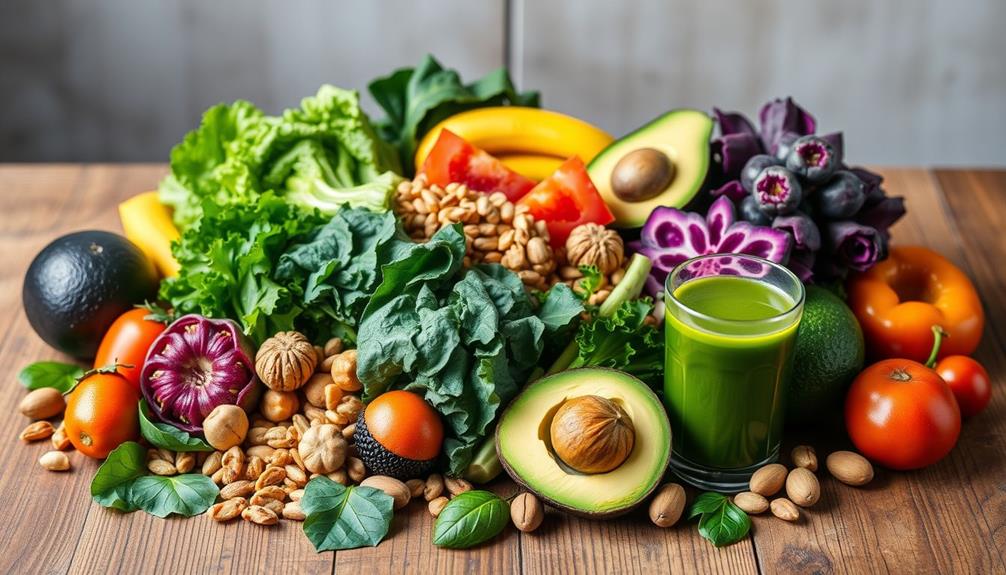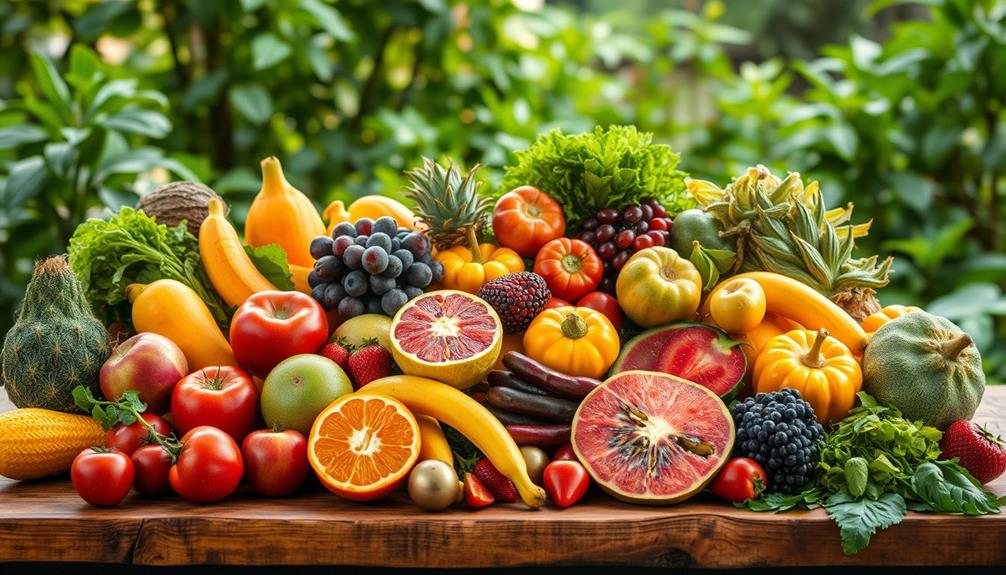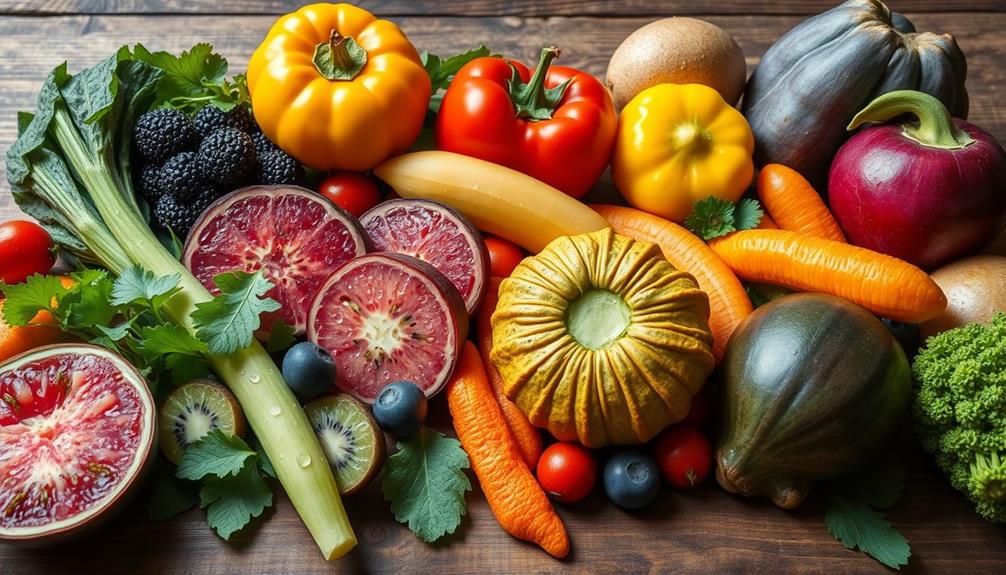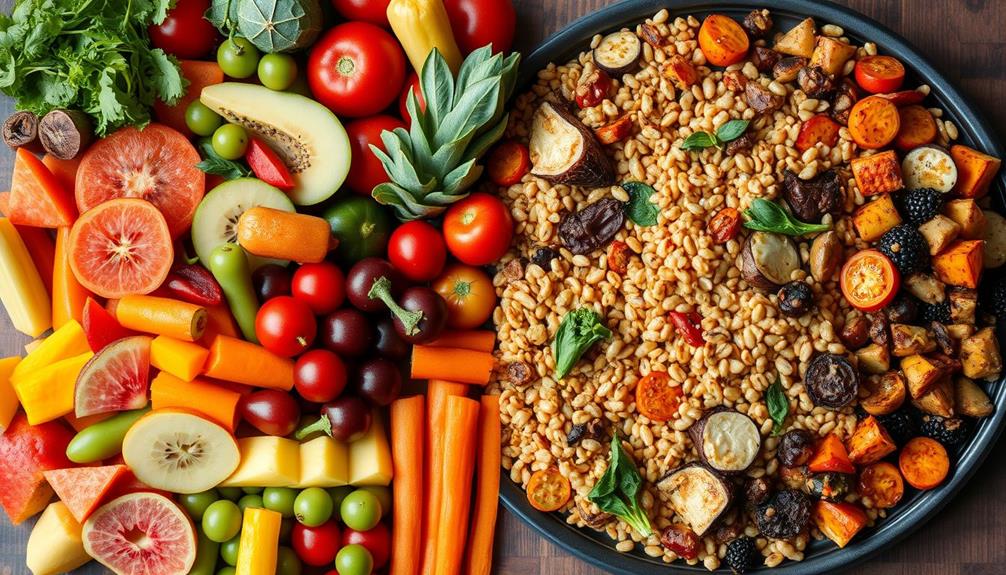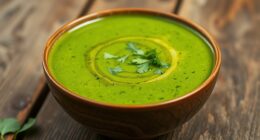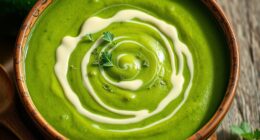Yes, raw food can cause constipation in your dog if the diet isn't balanced. A high bone content or low fiber intake often leads to dry, hard stools. Make sure you're incorporating fiber-rich fruits and vegetables, like pumpkin, to aid digestion. Always provide fresh water to keep things moving smoothly. Additionally, regular exercise can greatly help prevent constipation. You might want to monitor your dog's stool quality and hydration closely, and consider some nutritional supplements for gut health. There's much more to explore on how to optimize your dog's diet for better digestive health.
Key Takeaways
- High bone content in raw diets can lead to dry, hard stools and constipation if not balanced with fiber and moisture.
- Inadequate hydration and low fiber intake from a lack of fruits or vegetables contribute significantly to constipation in dogs.
- Incorporating fiber-rich foods, like pureed pumpkin, can enhance digestion and alleviate constipation in dogs on a raw diet.
- Regular access to fresh water and exercise are crucial for preventing constipation and promoting healthy bowel movements.
- Monitoring stool consistency and frequency allows for early detection of digestive issues and ensures a balanced diet.
Understanding Constipation in Dogs
Understanding constipation in dogs can be significant for maintaining their overall health. When your dog's on a raw diet, constipation can arise, primarily due to the high bone content in their meals. This can lead to drier, harder stools, making it tough for your dog to have regular bowel movements.
A lack of fibre is often a key contributor to this issue, as it plays an important role in keeping the digestive tract functioning smoothly. Additionally, monitoring your dog's diet is important, as the introduction of new foods can impact their digestive health. Be sure to provide proper diet guidelines to support their wellbeing.
It's important to note that dogs on a raw diet may naturally have varied bowel movements, so don't panic if their stools aren't consistently well-formed. However, if you notice signs of constipation, you can help your dog by adjusting their diet. Reducing the frequency of raw meaty bones and incorporating more fruits or canned pumpkin can increase fibre intake and alleviate constipation symptoms.
Regularly monitoring your dog's diet and stool consistency is significant. Factors like stress, illness, medications, and exercise can also impact their digestion and contribute to constipation.
Dietary Factors in Raw Feeding
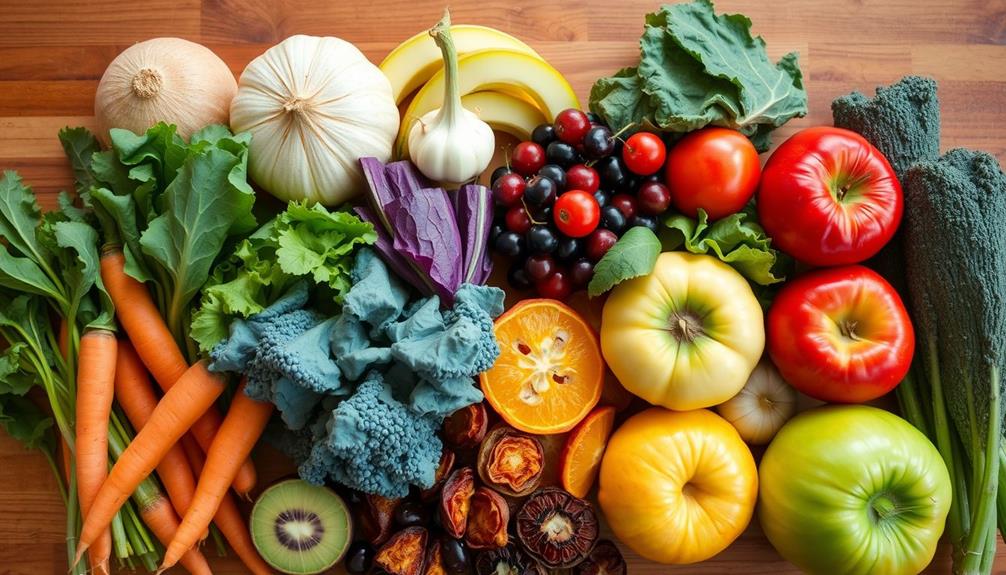
When feeding your dog a raw diet, the balance of ingredients plays a significant role in their digestive health. Raw food often includes a higher proportion of raw meaty bones, which can lead to constipation if not balanced with adequate meat and offal.
To promote regular bowel movements, incorporate fiber-rich foods like pureed pumpkin or leafy greens into their meals. These additions can help prevent constipation while enhancing overall digestion. Additionally, consider that certain juices, like celery juice, can aid in digestive health and may be beneficial in moderation known for anti-inflammatory properties.
Hydration is also essential in raw feeding. Since raw food generally contains more moisture than dry kibble, make certain your dog always has access to fresh water. This can help mitigate the risks of constipation associated with a raw diet.
Additionally, regular exercise is crucial. Physical activity stimulates bowel movements and supports your dog's digestive health.
A balanced diet combined with proper hydration and exercise can create a harmonious environment for your dog's digestive system, reducing the likelihood of constipation. By paying attention to these dietary factors, you can guarantee your dog thrives on a raw food diet while maintaining healthy digestion.
Signs of Constipation
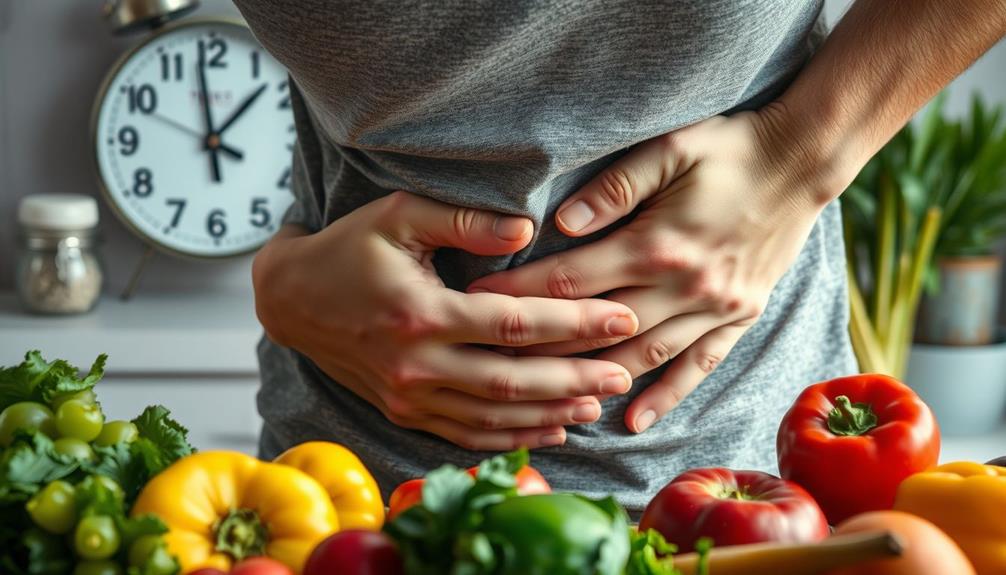
Often, dogs show clear signs of constipation that you can easily recognize. Being aware of these signs is essential to guarantee your furry friend remains healthy and comfortable. For instance, just like humans, dogs can experience discomfort from digestive issues, and understanding how to manage their diet can be beneficial considering dietary adjustments.
Watch for the following indicators:
- A lack of stool for over 24 hours
- Straining during defecation, often accompanied by whining or trembling
- The presence of hard stools, indicating difficulty in passing waste
- Notable behavioral changes, such as reduced activity levels or reluctance to move
When your dog experiences constipation-related pain, you may notice discomfort during attempts to defecate. Monitoring stool consistency is important; hard, crumbly stools typically suggest constipation, while soft stool indicates a healthier digestive process.
If your dog hasn't defecated for more than 48 hours or displays severe distress, it's imperative to consult a veterinarian for further evaluation and care. Being proactive can help prevent more serious health issues down the line.
Causes of Constipation

Constipation in dogs can stem from various factors that impact their digestive health. One major cause is a diet that's excessively high in bone content, which often results in dry, hard stools. If you're feeding your dog a raw diet, it's essential to balance the bone-to-meat ratio to avoid this issue. Additionally, insufficient hydration plays a significant role. Dogs fed dry or low-moisture food may not drink enough water, leading to dehydrated stools and constipation.
A lack of dietary fiber can also contribute to gastrointestinal issues. Raw-fed dogs that don't consume enough fruits or vegetables might not get the fiber needed for regular bowel movements. Other factors include medical conditions like inflammatory bowel disease or spinal issues, which can disrupt normal digestive function. Stress and certain medications, such as antihistamines and diuretics, can further complicate matters, impacting your dog's overall digestive health.
| Factor | Impact on Constipation |
|---|---|
| High bone diet | Causes dry, hard stools |
| Insufficient hydration | Leads to dehydrated stools |
| Low fiber intake | Impairs bowel regularity |
Solutions for Constipation
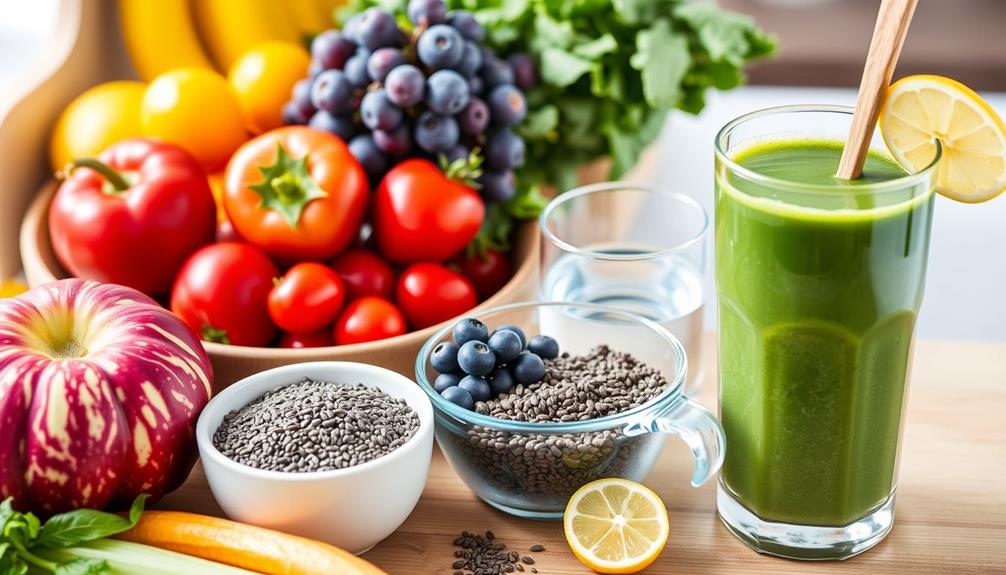
To tackle constipation in dogs, consider making some dietary adjustments and lifestyle changes that can greatly improve their digestive health. Understanding the importance of hydration and nutrient balance in your pet's diet is essential for preventing digestive issues.
Start by monitoring the bone content in your pet's diet. Reducing raw meaty bones to once a week can help alleviate constipation caused by excessive bone intake. Additionally, incorporating more fruits or canned unsweetened pumpkin can regulate bowel movements and ease straining.
For further insights on maintaining your pet's health, check financial considerations for elderly care.
Here are some effective strategies to enhance your dog's digestive health:
- Increase offal in their diet for better nutrient balance.
- Add additional fruits to their meals for fiber and moisture.
- Include bone broth for adequate hydration and smoother digestion.
- Ensure regular exercise to stimulate bowel movements and improve overall digestive function.
Nutritional Supplements to Consider
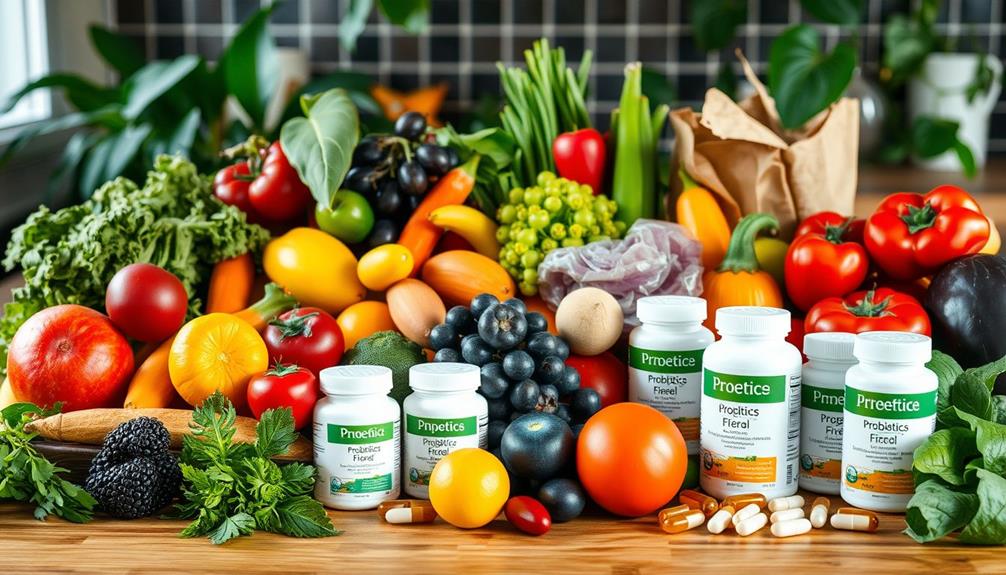
Addressing your dog's constipation through dietary adjustments can set the stage for considering specific nutritional supplements that further support digestive health. Probiotics are a great option; they enhance gut health and digestion, promoting a balanced microbiome that can help reduce the risk of constipation.
Additionally, incorporating essential oils for digestive support such as ginger oil may also help alleviate symptoms. Adding fiber-rich supplements like psyllium husk can improve stool consistency and regularity, with a recommended dosage of ½ to 1 teaspoon per day.
Another effective remedy is slippery elm bark, which soothes the gastrointestinal tract and aids stool passage. The suggested dosage is ¼ teaspoon for every 10 pounds of body weight.
Incorporating healthy oils, such as omega-3 or coconut oil, can support digestion and bowel movements, starting with one teaspoon for dogs.
Don't forget about canned pumpkin! It's nutrient-dense and packed with fiber, making it a fantastic addition to meals. Adding one to two tablespoons can greatly promote healthy digestion and alleviate constipation.
Preventative Measures for Constipation
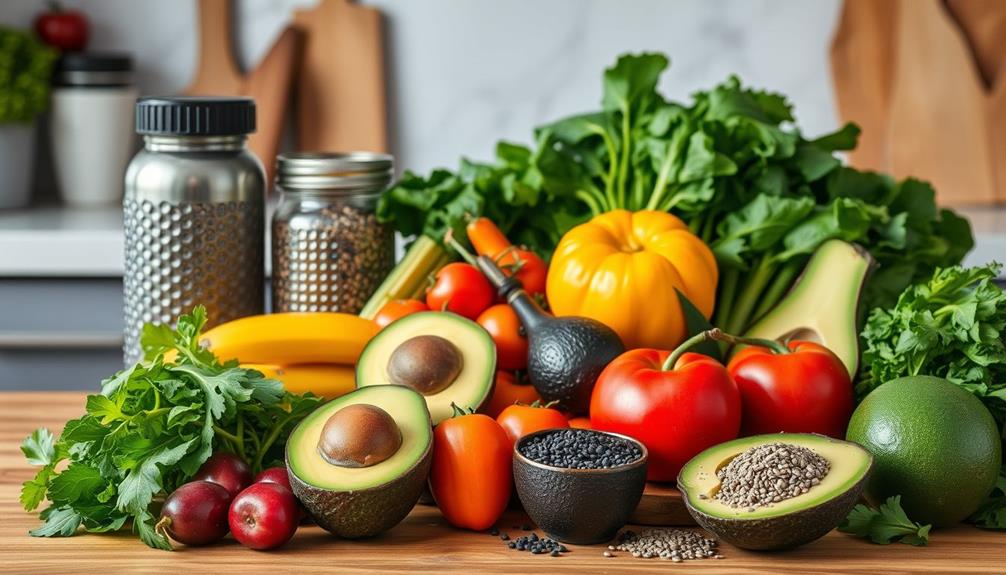
Keeping your dog's digestive health in check starts with a few simple preventative measures. By implementing these strategies, you can help prevent constipation and guarantee your furry friend thrives on a raw food diet.
It's important to remember that a dog's digestive system is influenced by various factors, including their diet and hydration levels, which can considerably affect their bowel movements. Newborn bowel movement frequency provides a helpful understanding of how regular patterns can promote health.
- Guarantee adequate hydration: Make sure your dog has constant access to fresh water, as hydration is key to preventing constipation.
- Maintain a balanced diet: Include appropriate levels of protein, fiber, and moisture in their meals. Adding leafy greens or canned pumpkin can support healthy bowel movements.
- Encourage regular exercise: Physical activity is essential for promoting digestive health and stimulating regular bowel movements.
- Establish a consistent feeding schedule: A regular feeding routine helps regulate digestion and prevent gastrointestinal upset.
Additionally, monitor your dog's diet closely, especially if they're on a raw food regimen.
Avoid excessive bone content, aiming for a composition of 80% muscle meat, 10% bone, and 10% offal.
Comparing Raw and Processed Diets
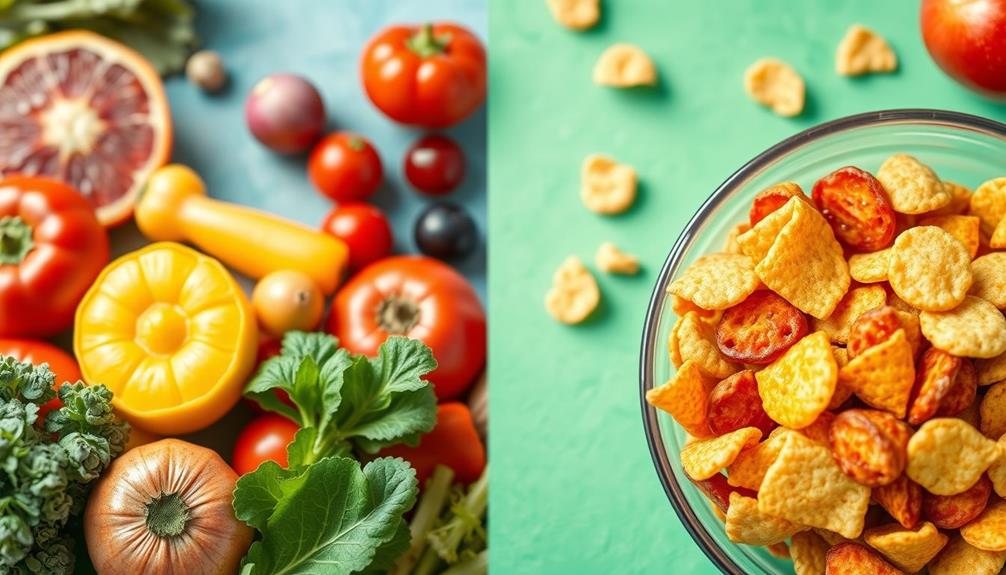
When you compare raw and processed diets, you'll notice key differences in nutrient utilization and stool volume.
Raw diets often lead to smaller, firmer stools, thanks to efficient nutrient absorption, which can be likened to budgeting for financial health where every nutrient plays a crucial role.
In contrast, processed diets can contribute to larger stool volumes and potential dehydration.
Understanding these distinctions can help you make informed choices for your dog's digestive health.
Nutrient Utilization Differences
In comparing raw and processed diets, it's clear that nutrient utilization plays a crucial role in your dog's overall health. Dogs on a raw food diet experience 25-30% less stool volume, indicating more efficient nutrient absorption. This means that your dog can derive more benefits from the food they consume, leading to improved digestion and regular bowel movements.
Engaging with high-quality content on this topic can further enhance your understanding of how diet affects digestion.
Consider these key points:
- The higher moisture content in raw diets (65-75%) helps maintain hydration, essential for preventing constipation.
- Raw-fed dogs produce smaller, chalky white stools with minimal odor, showcasing their healthy digestion.
- A balanced raw food diet consists of 80% muscle meat, 10% bone, and 10% offal, ensuring a variety of nutrients.
- Processed diets often have only 8-10% moisture, resulting in drier stools and higher constipation risk.
Stool Volume Comparison
Comparing stool volume between dogs on raw versus processed diets reveals significant differences that can impact your dog's health.
Dogs on a raw food diet typically produce 25-30% less stool volume compared to those on processed diets. This reduction is due to more efficient nutrient absorption, which is important for overall well-being, especially for those with conditions like Borderline Personality Disorder (BPD) that affect emotional stability.
As you observe your dog's stool, you'll notice that raw-fed dogs often have smaller, chalky white stools that emit minimal odor, indicating high digestibility.
However, the bone content in raw diets can lead to firmer stools, which may contribute to constipation if not balanced with adequate moisture and offal.
When adapting to a raw diet, expect initial variations in stool volume and consistency. These changes should stabilize as your dog adjusts to the new feeding regimen.
Monitoring stool characteristics is essential during this adaptation. It can provide valuable insights into dietary adequacy and help you make adjustments for maintaining healthy digestion.
If you notice any signs of constipation or other issues, don't hesitate to tweak the moisture content or the types of raw food you're offering. Keeping an eye on these factors will guarantee your dog remains healthy and comfortable.
Digestive Health Impact
The choice between raw and processed diets can have a significant impact on your dog's digestive health. When you opt for a raw diet, you might notice a few key differences in your dog's stool and overall digestion.
A balanced diet rich in fruits and vegetables can also enhance nutrient absorption, leading to improved digestive health, as noted in effective strategies for weight loss.
- Raw diets typically produce 25-30% less stool volume, indicating better nutrient absorption.
- Dogs on raw diets often have smaller, chalky white stools, with minimal odor due to high moisture content.
- Including raw meaty bones can sometimes lead to slight constipation; adjusting the bone content may help.
- The moisture in raw diets (65-75%) helps keep your dog hydrated, promoting healthy bowel movements.
Frequently Asked Questions
Can Raw Food Make You Constipated?
Raw food can make you constipated if you don't balance your diet properly. If you're consuming too many tough ingredients, consider adding more fiber-rich fruits or vegetables to help keep things moving smoothly. Additionally, drinking plenty of water can also aid in digestion and prevent constipation while eating raw foods. It’s important to remember that raw food can have many benefits, such as being rich in enzymes, vitamins, and minerals that can support overall health and improve digestion. By incorporating a variety of raw foods into your diet and being mindful of balancing your intake, you can experience the many benefits of consuming raw food while avoiding potential digestive issues.
What Is the Number One Food That Causes Constipation?
The number one food causing constipation in dogs is excessive raw meaty bones. Their high calcium content leads to hard stools. To prevent this, make certain your dog's diet includes sufficient fiber and hydration from fresh fruits and veggies.
Why Do I Get Constipated When I Eat Healthy?
When you switch to a healthier diet, your body might struggle to adjust to the increased fiber. If you're not hydrating enough or balancing fiber types, constipation can easily occur. Give your system time to adapt.
Why Is My Dog Not Pooping on a Raw Food Diet?
If your dog's diet's lacking balance, constipation could occur. Make certain you're mixing meats, offal, and fiber-rich fruits or veggies. Also, provide plenty of fresh water to keep things flowing smoothly and avoid discomfort.
Conclusion
To sum up, while a raw food diet can lead to constipation in dogs, it's not a guaranteed outcome. About 25% of dog owners report changes in their pet's bowel movements when switching diets, highlighting the importance of monitoring your dog's reactions. Ensuring adequate hydration and fiber intake can make all the difference. By being attentive to your dog's needs and making adjustments as necessary, you can help maintain their digestive health and overall well-being.

